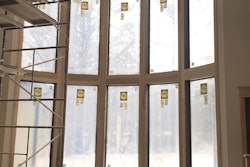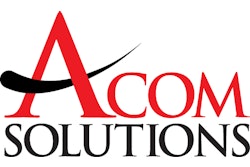Vendors scrambling to roll out specialized equipment as homeland security, quest for differentiation driving new investments, ABI reports
Oyster Bay, NY — March 3, 2005 — Increasing fleet owner interest in trailer tracking and monitoring solutions has telematics vendors scrambling to introduce new, specialized telematics equipment, according to new research from market intelligence firm ABI Research.
The new ABI study "Trailer Tracking Markets" finds that the industry has evolved to the point where telematics systems vendors are now providing specialized hardware for specific types of trailers besides the common dry van, such as refrigerated and flatbed trailers, and even intermodal cargo containers.
"We are seeing this newfound interest in trailer tracking and monitoring coming from several areas," said Frank Viquez, ABI's director of automotive research. "Homeland security has been a big motivator among fleet owners and will remain so, but other factors include the replacement of analog-based telematics hardware with digital, a readily realized return on investment for hardware and the use of telematics as a differentiator for major truckload carriers to improve their efficiency and customer service efforts."
The new study tracks the varied efforts of vendors around the world to provide trailer tracking and monitoring solutions to a diverse customer base. It also examines applicable technologies — RFID, terrestrial and satellite communications infrastructures, as well as new GPS competitors — for their significance and impact.
One of the largest commercial deployments so far this year has been in North America, where Schneider National will outfit all of its 48,000 trailers with QUALCOMM's new T2 trailer tracking hardware.
ABI cautions industry participants that markets are in differing stages of growth around the world. For example, the European Union's growing pains are temporarily stalling hardware vendor efforts until standards for a harmonized road tolling infrastructure and equipment can be realized. In the Middle East and Africa, increasing adoption continues but will pale in comparison to some emerging Asian regions, including India and China.
For more information on the latest trends in the logistics space, see the article "The Analyst Corner: Fulfillment & Logistics" in the October/November 2004 issue of Supply & Demand Chain Executive.
Oyster Bay, NY — March 3, 2005 — Increasing fleet owner interest in trailer tracking and monitoring solutions has telematics vendors scrambling to introduce new, specialized telematics equipment, according to new research from market intelligence firm ABI Research.
The new ABI study "Trailer Tracking Markets" finds that the industry has evolved to the point where telematics systems vendors are now providing specialized hardware for specific types of trailers besides the common dry van, such as refrigerated and flatbed trailers, and even intermodal cargo containers.
"We are seeing this newfound interest in trailer tracking and monitoring coming from several areas," said Frank Viquez, ABI's director of automotive research. "Homeland security has been a big motivator among fleet owners and will remain so, but other factors include the replacement of analog-based telematics hardware with digital, a readily realized return on investment for hardware and the use of telematics as a differentiator for major truckload carriers to improve their efficiency and customer service efforts."
The new study tracks the varied efforts of vendors around the world to provide trailer tracking and monitoring solutions to a diverse customer base. It also examines applicable technologies — RFID, terrestrial and satellite communications infrastructures, as well as new GPS competitors — for their significance and impact.
One of the largest commercial deployments so far this year has been in North America, where Schneider National will outfit all of its 48,000 trailers with QUALCOMM's new T2 trailer tracking hardware.
ABI cautions industry participants that markets are in differing stages of growth around the world. For example, the European Union's growing pains are temporarily stalling hardware vendor efforts until standards for a harmonized road tolling infrastructure and equipment can be realized. In the Middle East and Africa, increasing adoption continues but will pale in comparison to some emerging Asian regions, including India and China.
For more information on the latest trends in the logistics space, see the article "The Analyst Corner: Fulfillment & Logistics" in the October/November 2004 issue of Supply & Demand Chain Executive.
- More research from ABI Research.



















